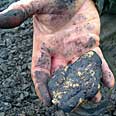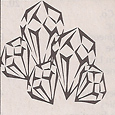All Articles
Legislative and Regulatory Update
December 2008 by Scott Harn
• Election impactBack In November 2007, the Associated Press reported that Barack Obama was against the Hardrock Mining and Reclamation Act of 2007. The bill was passed by the House of Representatives but failed to gain traction in the Senate.
Senator Obama told the Associated Press that the legislation “places a significant burden on the mining industry and could have a significant impact on jobs.” He also opposed the proposed fees.
The bill included royalties of 4% of gross-revenue on existing hardrock mines and an 8% gross-revenue royalty on new mines.
We will have to wait and see if he changes his views now that he has been elected.
Congress may be a different story. Many Democrats have traditionally favored placing additional restrictions on public land use and placing public lands off-limits to mining. They maintained their heavy majority in the House in this election, and Democrats obtained a majority of seats in the Senate. However, they failed, so far, to reach the crucial number of 60 seats, which would have allowed them to override any Republican filibuster. Democrats have 57 seats with 3 races still undecided. Joe Lieberman, an Independent from Connecticut, had been siding with Democrats on many issues but campaigned for McCain. He may play a more prominent role in any attempts to pass mining legislation.
At press time, it’s unclear who Obama will appoint to head key agencies and departments such as Interior, Energy, Environmental Protection Agency, Forest Service and Bureau of Land Management.
Obama has previously expressed support for additional restrictions on CO2 emissions and supports a cap-and-trade system. Placing restrictions on CO2 emissions would severely increase the cost of compliance for all industries, not just mining.
• New Washington State small-scale regulations
The Washington Fish and Wildlife Commission approved new small-scale mining regulations after literally years of meetings and talks between prospectors, miners and regulators.
For all of their efforts, the miners are worse off in many aspects.
Small-scale miners were previously regulated under the Gold & Fish Book, a pamphlet that miners were required to carry with them while mining in the state.
The original intent was to simplify regulations and delete regulations that were not backed by sound science. What the miners ended up with is 92 pages of regulations that are much more restrictive, and still not backed by sound science.
The Washington Department of Fish & Wildlife (WDFW) inserted timing windows for rivers and streams that prevent a miner from working during June and July in many watercourses, effectively preventing them from making a living. WDFW has failed to provide scientific evidence of the need for the timing restrictions beyond a mere possibility that fish eggs may be present.
“The probability of eggs still being in the gravel still existed in July,” Greg Hueckel, the WDFW’s habitat program assistant director, stated in an interview with the Yakima Herald-Reporter. “I have to be conservative. If the activity has the potential of damaging fish redds (egg nests), I cannot allow the activity to occur.”
The agency continues to ignore the fact that miners have been granted a right to mine under the 1872 Mining Law. They also ignore other studies that have concluded that suction gold dredging is de minimis—insignificant in terms of impact—and that suction dredgers and other miners clean the waterways by removing lead, mercury and trash.
The new regulations start April 3, 2009.
© ICMJ's Prospecting and Mining Journal, CMJ Inc.
Next Article »« Previous Article
Additional articles that might interest you...
Update on MMAC & PLP
June 2015
Public Lands for the People is working on a Miner's Bill of Rights with the support of several members of Congress.
Public Lands for the People is working on a Miner's Bill of Rights with the support of several members of Congress.
For a Few Specks of Gold
June 2006
The gold at the Ruby Hill Mine is microscopic, specks of specks that amount to a few ounces in every 100 tons of rock. It is embedded hundreds of feet beneath the rocky floor of the high desert, tawny and stubbled with sagebrush, toothy ridges dusted with snow.
The gold at the Ruby Hill Mine is microscopic, specks of specks that amount to a few ounces in every 100 tons of rock. It is embedded hundreds of feet beneath the rocky floor of the high desert, tawny and stubbled with sagebrush, toothy ridges dusted with snow.
VCIs for Environmentally Safe Maintenance
February 2001
A new preventative maintenance program utilizing environmentally friendly Vapor Corrosion Inhibitors (VCIs) is becoming a reality in major mining operations today.
A new preventative maintenance program utilizing environmentally friendly Vapor Corrosion Inhibitors (VCIs) is becoming a reality in major mining operations today.
Successful Nugget Hunting
April 2007
 Then it appeared. A 64-inch rack on the giant moose silhouetted against the sun. Bernie had waited for the large creature to come out into the open. He raised his bolt action Remington .338, took aim, and pulled the trigger.
Then it appeared. A 64-inch rack on the giant moose silhouetted against the sun. Bernie had waited for the large creature to come out into the open. He raised his bolt action Remington .338, took aim, and pulled the trigger.
 Then it appeared. A 64-inch rack on the giant moose silhouetted against the sun. Bernie had waited for the large creature to come out into the open. He raised his bolt action Remington .338, took aim, and pulled the trigger.
Then it appeared. A 64-inch rack on the giant moose silhouetted against the sun. Bernie had waited for the large creature to come out into the open. He raised his bolt action Remington .338, took aim, and pulled the trigger.
Over the Divide—Robert Michael “Mike” Corbley
April 2014
Mike was...featured on our November 2013 cover after he achieved his dream of recovering several huge nuggets...
Mike was...featured on our November 2013 cover after he achieved his dream of recovering several huge nuggets...
Gemstones
October 1999
 by Ronald F. Balazik
by Ronald F. Balazik
Excerpted from USGS Mineral Industry Survey's 1998 Annual Review
 by Ronald F. Balazik
by Ronald F. BalazikExcerpted from USGS Mineral Industry Survey's 1998 Annual Review
Gold Hits $1,000! What the Gold Price Is Telling Us
April 2008
For twenty years, between 1980 and 2000, the price of gold was rarely mentioned. There was little interest, and the price was either falling or remaining steady. Since 2001, however, interest in gold has soared along with its price.
For twenty years, between 1980 and 2000, the price of gold was rarely mentioned. There was little interest, and the price was either falling or remaining steady. Since 2001, however, interest in gold has soared along with its price.
Subscription Required:
The Bawl Mill
• Mining Journal Contest
• Bullion River's French Gulch Gold Mine
• Montana Tunnels Gets Final OK
• Reading A River: Finding The Paystreaks—Part I
• Gold Miners Hunker Down Amid Financial Storm
• Lluvia de Oro—A Shower of Gold Awaiting Development in the Sierra Madre—Part II
• From Hand Sluice to Dredge
• Melman on Gold & Silver (2008 Year in Review)
• Chavez Eyes Venezuela’s Largest Gold Mine
• Mining Stock Quotes and Mineral & Metal Prices
Free:








